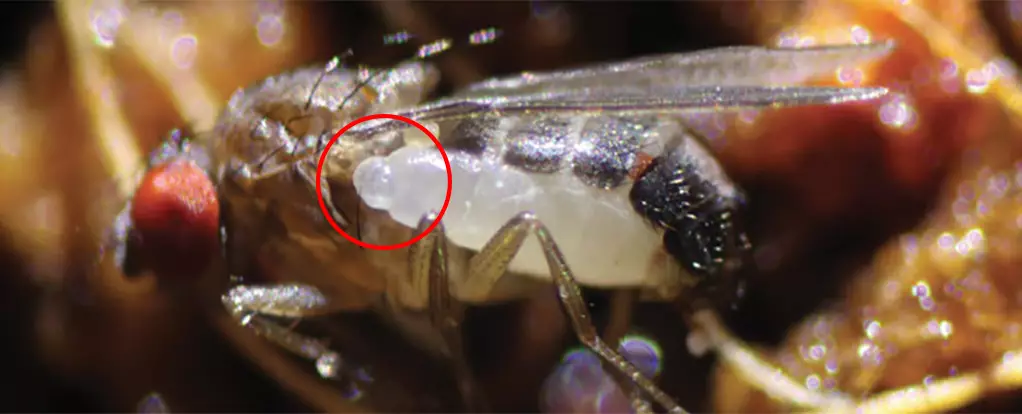In the complex tapestry of insect biology, occasional surprises arise that challenge existing paradigms. One such surprise was unveiled by a team of biologists who discovered a new species of wasp nestled within an unexpected host—the abdomen of an adult fruit fly. This wasp, named Syntretus perlmani, defies the conventions of parasitoid behavior, suggesting intriguing insights into the ecological interactions of wasps and their hosts.
Typically, parasitoid wasps are known for their voracious reproductive strategies, often targeting juvenile hosts. Various species have adapted to lay their eggs in the larval forms of Drosophila flies; these are the preferred hosts for up to 200 different parasitoid species. In a fascinating twist, Syntretus perlmani has opted for the adult phase of these flies as its nurturing ground. This distinct choice raises critical questions about the ecological advantages that might account for such a bold evolutionary strategy.
The initial encounter with the species occurred serendipitously in March 2023 as researchers were engaged in a study on nematode infections in fly populations across Mississippi. The discovery of a larval wasp in the abdomen of a male Drosophila affinis was an unexpected but thrilling detour from their research objectives. Here lay the crucial clue that would steer the investigation towards this unique species.
Over an extensive collection period of 11 months, the researchers dedicated themselves to observing the occurrence of Syntretus perlmani within male Drosophila affinis across Mississippi, Alabama, and North Carolina. With over 6,000 flies screened, the team discovered a mere 1 percent displayed signs of infection, with some periods reporting as low as 0.5 percent. Such a low incidence prompts further contemplation about the dynamics of parasitoid wasp life cycles and host susceptibility.
Interestingly, among the 477 female flies examined, only one was found hosting a wasp larva. This promotes speculation over the host-selection preferences of Syntretus perlmani and may suggest a level of specificity that could elucidate its survival strategy.
The life cycle of this peculiar wasp is a remarkable tale of biology. Upon the successful oviposition into the adult host, the larva undergoes a development phase of 18 days. Notably, the host continues its regular activities during this period, creating a stark juxtaposition between the vitality of the fly and the insidious development of parasitism within. As maturation draws near, the wasp larva wrestles its way out of the fly host’s abdomen—echoing the classic “chestburster” moment so familiar to horror genre enthusiasts.
The rapid reproductive capability of female Syntretus perlmani adds yet another layer of complexity. Within a brief 24 hours of emerging from their cocoon, females engage in oviposition, setting forth the cycle anew. This swift turn-around time suggests that their reproductive strategy is adapted to maximize the potential for survival amid the limited numbers witnessed in the wild.
The discovery of Syntretus perlmani holds substantial implications for further studies in the fields of ecology, evolution, and behavioral science. By establishing its presence in common laboratory models like Drosophila melanogaster, researchers have an opportunity to explore various biological mechanisms that influence immunity, metabolism, and ecological interactions.
As the researchers noted, the collection of these wasps from backyard traps could render this species an invaluable resource for biologists attempting to unlock the subtleties of nature’s design. The ability of Syntretus perlmani to adapt to atypical hosts expands our understanding of adaptations within the wasp family and their underlying evolutionary drivers.
Syntretus perlmani’s discovery not only enriches the biodiversity narrative but also serves as a compelling example of nature’s unpredictable elements. It challenges established notions within parasitoid behavior and emphasizes the need for ongoing exploration in the natural world. As scientists peel back the layers of complexity surrounding this wasp, they unravel not just the story of a new species, but also the essential dialogues between hosts and parasitoids that define ecosystems. In this strange dance of life and death, the world of insects continues to reveal its enigmatic beauty.


Leave a Reply